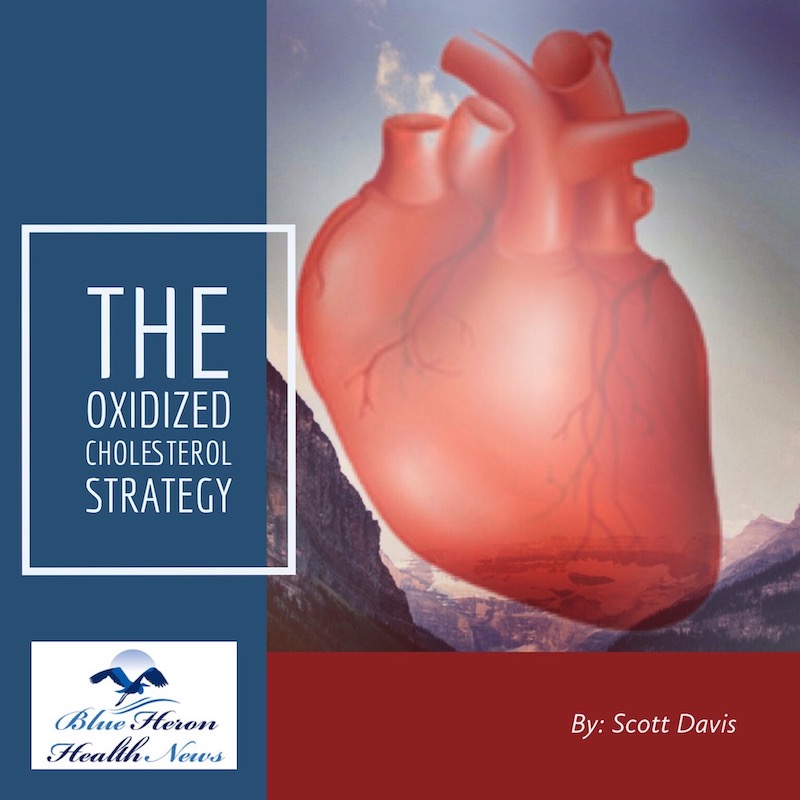
The Oxidized Cholesterol Strategy By Scott Davis is a well-researched program that reveals little known secret on how to tackle cholesterol plaque. This program will tell you step by step instructions on what you need to completely clean plaque buildup in your arteries so as to drop your cholesterol to healthy level. It also helps to enhance your mental and physical energy to hence boosting your productivity.
How does oxidized cholesterol affect cardiovascular health?
Oxidized cholesterol, particularly oxidized low-density lipoprotein (ox-LDL), has a significant and harmful impact on cardiovascular health. It plays a crucial role in the development and progression of atherosclerosis, which is the underlying cause of many cardiovascular diseases (CVD), including heart attacks, strokes, and peripheral artery disease. Here’s how oxidized cholesterol affects cardiovascular health:
1. Endothelial Dysfunction:
- Damage to the Endothelium: The endothelium is the inner lining of blood vessels that helps regulate vascular function. Oxidized LDL damages endothelial cells, making the endothelium more permeable to lipids and white blood cells. This damage disrupts the normal function of blood vessels, leading to endothelial dysfunction, a key early event in the development of atherosclerosis.
- Reduced Nitric Oxide Production: Nitric oxide (NO) is essential for maintaining vascular health by promoting vasodilation (widening of blood vessels) and reducing blood pressure. Oxidized LDL interferes with NO production, leading to reduced vasodilation, increased vascular resistance, and higher blood pressure, all of which strain the cardiovascular system.
2. Formation of Atherosclerotic Plaques:
- Foam Cell Formation: Oxidized LDL is more likely to be taken up by macrophages, a type of white blood cell, through scavenger receptors. When macrophages ingest large amounts of oxidized LDL, they become foam cells. These foam cells accumulate within the arterial walls, forming fatty streaks, which are the precursors to atherosclerotic plaques.
- Plaque Development: Over time, the accumulation of foam cells, smooth muscle cells, and other cellular debris leads to the formation of atherosclerotic plaques. These plaques thicken the arterial walls and narrow the arteries, restricting blood flow to vital organs, including the heart and brain.
3. Chronic Inflammation:
- Sustained Inflammatory Response: The presence of oxidized LDL triggers a chronic inflammatory response in the arterial walls. This inflammation is driven by the continuous recruitment of immune cells, such as macrophages, and the release of pro-inflammatory cytokines. Chronic inflammation accelerates the progression of atherosclerosis and contributes to the growth and instability of plaques.
- Cytokine Release: Oxidized LDL stimulates the release of inflammatory cytokines, which further attract immune cells to the site of plaque formation. This ongoing inflammation can weaken the plaque’s fibrous cap, making it more susceptible to rupture.
4. Plaque Instability and Rupture:
- Vulnerability of Plaques: Oxidized LDL contributes to the instability of atherosclerotic plaques. These plaques often have a lipid-rich core, a thin fibrous cap, and significant inflammatory activity, making them more prone to rupture.
- Rupture and Thrombosis: When a plaque ruptures, its contents, including oxidized LDL, are exposed to the bloodstream. This exposure can trigger the formation of a blood clot (thrombus) at the site of the rupture. If the thrombus obstructs the artery, it can lead to a heart attack or stroke, depending on the location of the blockage.
5. Increased Risk of Heart Attack and Stroke:
- Coronary Artery Disease (CAD): The accumulation of atherosclerotic plaques in the coronary arteries, which supply blood to the heart muscle, can lead to coronary artery disease (CAD). Reduced blood flow due to plaque buildup or a sudden blockage from a thrombus can cause angina (chest pain) or a heart attack (myocardial infarction).
- Ischemic Stroke: Atherosclerosis in the arteries that supply the brain, such as the carotid arteries, can lead to ischemic stroke. Plaque rupture or a blood clot in these arteries can block blood flow to the brain, resulting in a stroke, which can cause permanent neurological damage or death.
6. Hypertension (High Blood Pressure):
- Increased Vascular Resistance: The narrowing and hardening of arteries due to atherosclerosis increase vascular resistance, making it more difficult for the heart to pump blood effectively. This increased resistance leads to hypertension, which is a major risk factor for heart disease, stroke, and heart failure.
- Endothelial Dysfunction and Blood Pressure: As mentioned earlier, oxidized LDL contributes to endothelial dysfunction, which impairs the ability of blood vessels to dilate properly. This contributes to increased blood pressure, further straining the cardiovascular system.
7. Peripheral Artery Disease (PAD):
- Impaired Blood Flow to Limbs: Atherosclerosis caused by oxidized LDL can affect arteries in the limbs, leading to peripheral artery disease (PAD). PAD reduces blood flow to the extremities, causing pain, cramping, and in severe cases, tissue damage and gangrene.
- Claudication: Claudication is a symptom of PAD characterized by pain or cramping in the legs during physical activity, relieved by rest. This condition can significantly impair mobility and quality of life.
8. Chronic Kidney Disease (CKD):
- Vascular Damage in the Kidneys: Oxidized LDL can contribute to the development of atherosclerosis in the renal arteries, which supply blood to the kidneys. This can lead to reduced kidney function and chronic kidney disease (CKD). CKD, in turn, increases the risk of cardiovascular complications, creating a vicious cycle.
- Increased Cardiovascular Risk in CKD: Individuals with CKD are at a higher risk of cardiovascular events, partly due to the increased burden of oxidized LDL and atherosclerosis. Managing oxidized LDL is crucial in this population to reduce the risk of heart attacks, strokes, and worsening kidney function.
9. Contributing to Metabolic Syndrome and Diabetes:
- Insulin Resistance: Oxidized LDL is associated with insulin resistance, a condition where the body’s cells become less responsive to insulin, leading to elevated blood sugar levels. Insulin resistance is a key component of metabolic syndrome, a cluster of conditions that increase the risk of heart disease, stroke, and type 2 diabetes.
- Increased Cardiovascular Risk in Diabetes: People with diabetes are more prone to atherosclerosis and cardiovascular disease due to higher levels of oxidized LDL and other metabolic disturbances. Managing oxidized LDL is especially important in individuals with diabetes to reduce the risk of complications.
10. Potential Neurological Implications:
- Cognitive Decline and Dementia: Emerging research suggests that oxidized LDL and atherosclerosis may be linked to cognitive decline and dementia, including Alzheimer’s disease. The mechanisms are not fully understood, but vascular health is closely tied to brain function, and impaired blood flow due to atherosclerosis may contribute to neurodegeneration.
- Vascular Dementia: Atherosclerosis in the brain’s blood vessels, influenced by oxidized LDL, can lead to vascular dementia, a condition characterized by cognitive impairment resulting from reduced blood flow to the brain.
Conclusion:
Oxidized cholesterol, particularly oxidized LDL, has a profound and detrimental impact on cardiovascular health. It contributes to the development and progression of atherosclerosis, leading to the formation of plaques that narrow and harden arteries. The instability of these plaques, driven by oxidized LDL, increases the risk of plaque rupture and subsequent thrombosis, which can result in life-threatening events such as heart attacks and strokes. Additionally, oxidized LDL contributes to chronic inflammation, hypertension, peripheral artery disease, chronic kidney disease, and potentially cognitive decline. Managing oxidized cholesterol through lifestyle changes, a healthy diet, and medical interventions is crucial for reducing these health risks and maintaining cardiovascular health.

The Oxidized Cholesterol Strategy By Scott Davis is a well-researched program that reveals little known secret on how to tackle cholesterol plaque. This program will tell you step by step instructions on what you need to completely clean plaque buildup in your arteries so as to drop your cholesterol to healthy level. It also helps to enhance your mental and physical energy to hence boosting your productivity.